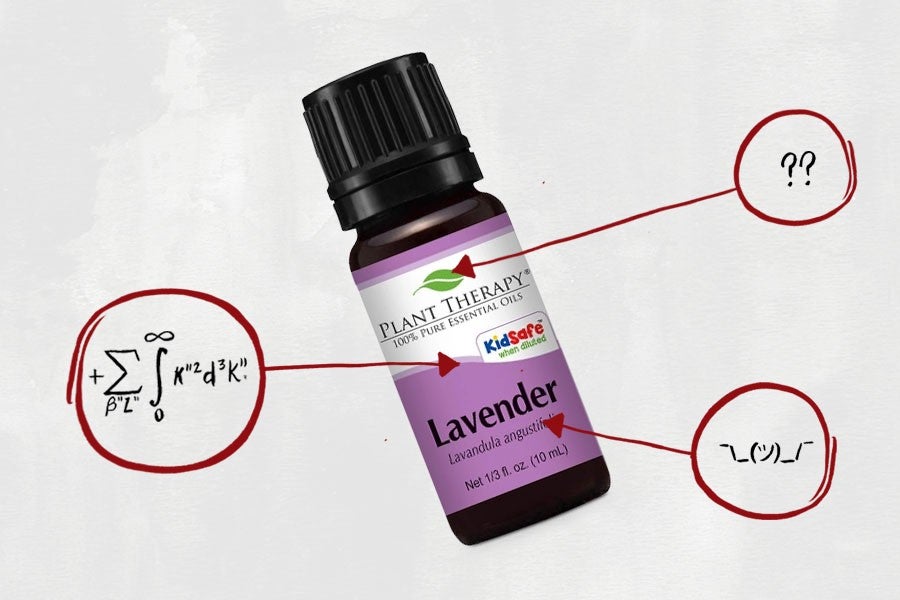We’re often told that you should never eat anything (or put anything on your body) if you don’t recognize everything on the ingredients list. But since most of us have no idea what xanthan gum or potassium benzoate are — or more importantly, what they’re doing to our bodies — we’re decoding the ingredients in the many things Americans put in (and on) themselves.
This edition: Plant Therapy Lavender Essential Oil, which is extracted from English Lavender. Because lavender essential oil is an ingredient in and of itself, this edition of “What’s in This?” will focus more on where it comes from and what it does (cheaper versions of lavender essential oil may come mixed with additional ingredients, but what those might be remains unclear).
Let’s get to it.
How Lavender Essential Oil Is Made
As mentioned previously, lavender essential oil is predominately extracted from English Lavender — or if you want to be scientific, lavandula angustifolia. This is done via steam distillation: English Lavender is placed into a still (similar to that used to brew beer), where steam and pressure encourage its glands to release “lavender essential oil.”
Why Lavender Essential Oil Is “Essential”
Here’s the simple answer: Essential oils are thought to represent the “essence” of whatever plant they were derived from — thus the name, “essential oils.” More specifically, essential oils seem to represent the odor and flavor exuded by their parent plants. The “essential” has absolutely nothing to do with them being essential to you in any way.
What Lavender Essential Oil Does
“Lavender essential oil is renowned for its many beneficial properties, including promoting calm, relaxation and being a nervous tension reliever,” according to the Plant Therapy website. “It can also be added to a carrier oil [which serves to dilute essential oils before applying them to the skin] to help reduce the appearance of scars and wrinkles, and help soothe alterations in skin integrity such as during sun exposure or a minor cooking burn.” Because essential oils are extremely concentrated, applying them directly to the skin without a carrier oil may result in adverse skin reactions.
Some science (kinda, sorta) supports these claims: A 1999 survey found that aromatherapy with lavender increased mood scores and reduced psychological distress in long-stay inpatient settings. A 1992 study also found that foot massages using lavender essential oil effectively lowered blood pressure, heart rate, respiratory rate, wakefulness and pain in ICU patients (half of whom were receiving artificial ventilation). Finally, a 2017 study seems to suggest that lavender essential oil might have anti-wrinkling properties; however, the authors claim that “more rigorous clinical trials would establish confidence from the medical professionals.”
That said, a 2013 scientific review of lavender essential oil concludes with a slightly less optimistic viewpoint: “The evidence for oral lavender is promising; however, until independent studies emerge with long-term follow-up data, it remains inconclusive. The use of more widely used forms of lavender administrations (aromatherapy, inhalation, massage, etc.) is not currently supported by good evidence of efficacy.”
In conclusion: ¯\_(ツ)_/¯
What Lavender Essential Oil Hopefully Doesn’t Do
A recent (terrifying) study found that numerous chemicals in lavender essential oil boost oestrogen and inhibit testosterone, which may cause gynaecomastia (aka, man boobs).
While not everyone has the same reaction to essential oils, this isn’t the first reported link between abnormal breast growth and lavender essential oil: A 2016 report published in the Journal of Pediatric Endocrinology and Metabolism details the cases of three boys, all of whom experienced prepubertal gynecomastia after being exposed to lavender essential oil for long periods of time. Another 2007 study follows three more pre-pubertal boys, who developed larger breasts after using products that contained lavender or tea tree essential oils. Shortly after discontinuing these products, their gynecomastia dissipated.
In conclusion:


